Come and run with champion athlete, Anna Frost (who's been winning races and smashing records left, right and centre), and find out how the pros run trails. Don't miss this great opportunity to learn from one of the world's best female trail runners. And before you ask, don't worry, she'll slow down ... 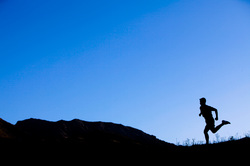 In partnership with Tracks and Trails, we're planning a week of running adventures, now open to Chamonix locals to join on a day by day basis. Monday 4th June - Saturday 9th June: We have 4 spaces available each day, priced at €50 per day. Evening focus groups/talks (and delicious dinner!) are €20. Discounts may be available for multiple days booked. Come and join us! Monday 4th June:
Day - Cross training, Individual fitness assessments (work out your heart rate zones), and mountain running technique. Evening - Dinner and nutrition focus group - eating healthily for an active lifestyle.
Tuesday 5th June:
Day - The importance of core and stretching, followed by a long(er) group run.
Evening - Dinner and focus group on kit for running in the mountains.
Wednesday 6th June:
Day - Yoga for runners, hills and intervals, followed by a more mellow Nordic walk - focusing on pole technique.
Evening - Dinner and focus group on fitness and training - how to use your heart rate zones to train effectively.
Thursday 7th June:
Day - Body composition analysis, back care Pilates, followed by a long group walk/run.
Evening - Dinner and focus group on safety and route finding for mountain runners.
Friday 8th June:
Day - Body sculpt - build lean running muscles!, followed by practical route planning, and a long walk/run.
Evening - Dinner and meet Anna Frost.
Saturday 9th June:
Day - Run with the pros! A full day in the mountains - at a steady pace and with a long lunch break - with Anna Frost. Finish off with a good stretch ...
Hope you can join us.
Get in touch to book your space.
Steph & Jules
Going biking this weekend? Check out our 6 BEST STRETCHES FOR CYCLISTS: 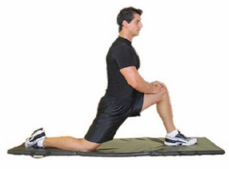 1. Hip Flexors:
That constant circular motion of your legs, coupled with a hunched over position equals chronically tight hip flexors for so many riders. Stretch them, stretch them and stretch them some more!!
Top tips: Check that your feet and knees are in alignment - all facing forwards. Don't let your front knee be infront of your foot. If you're not feeling the stretch in your hip flexors, try stretching your glutes first, then come back to this one.
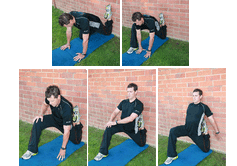 2. Thighs / Quads:
Needless to say, it’s not just your hip flexors that get a pounding on a bike –especially in the hills or if you’re doing speed work. Your quads work hard too– don’t let them get too tight or you can risk damaging your knees.
Top tips: This isn't the easiest position to get into, but it's definitely effective! To make it easier start with your back knee slightly away from the wall. You can use blocks or a chair in front to help you find your balance. If your knee hurts, put a cushion or pad under it.
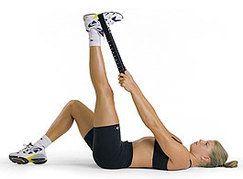 3. Hamstrings:
Legs at a constantly slightly bent angle leads to chronically shortened hamstrings, which can affect the position of your pelvis and lower back. Classically cyclists have short ones! Give your legs some love with these hamstring stretches.
Top tips: Work towards having a straight leg, but don't lock out your knee. Use a belt, towel, or if you can reach, hands around your calf and slowly ease your leg in towards you. Use your breath - as you breath in, relax and ease off. As you breathe out, try to bring your leg closer in. Take your time!
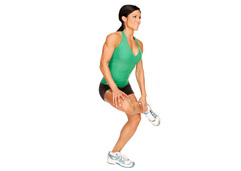 4. Glutes:
If you’re gonna wear lycra and ride a bike, having a tight little a…. is quite important!! Your glutes are the most powerful muscle in your body, but if those muscles get too tight, you’ll get your biomechanics all out of whack, reduce performance, and put pressure on your lower back.
Top Tips: If you find balance a problem in this position, use a steadying hand on the wall. Take your time and ease slowly down, as if you're sitting down in a chair. Try to keep your back straight and your stomach muscles slightly engaged.
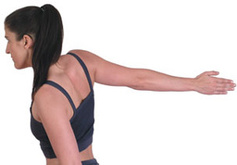 5. Chest / Pecs:
Hours and hours spent hunched over with your arms out in front, gripping the handle bars equals too tight pecs and rounded shoulders. You might think you don’t need to worry about your upper body, but it’s all about balance. Loosening off those pecs will help with your posture, spinal alignment and also help improve your breathing.
Top Tips: Use a door frame, wall, lamp post or tree. Try putting your hand in different positions to change the stretch - do it 3 times on each side - once with your hand low, once at shoulder height, and once high.
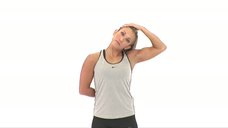 6. Neck and Traps:
Anyone who’s ever done a long ride will know their neck and shoulders get super stiff. Loosen off your neck and shoulders at the end of the day to stop that hunched up rounded shoulder look. Top tip: Gently pull on the side of your head to deepen the stretch. Repeat twice on each side, and in between each one, drop your chin forwards and gently roll your head from side to side, to stretch off your neck and between your shoulder blades.
HAPPY RIDING ... if you're keen to learn more about stretches specifically geared to mountain athletes, we have
SUPER STRETCH classes at Chamonix Gym on Sunday at 1830 and Tuesday at 1000.
Click here for more details. See you soon!!
I recently completed this personal profile of my eating habits, exercise routine, mindset and weaknesses for a corporate fitness training programme. So I thought I'd share. The questions seem simple enough at first glance, but it definitely got me thinking ... too much chocolate in my world for a start!!! How would yours look?
It’s that time of year again in Chamonix, TRAIL RUNNING SEASON! Whether you’re training for an event – the Mont Blanc marathon, Cross, Vertical Kilometre, the CCC / UTMB - or you just enjoy a bit of running for fun and fitness: 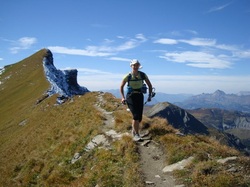 Read through our top 10 tips to make you a better trail runner.
1. Relax and Enjoy!
The essence of trail running is about fun and freedom, running in spectacular scenery, and exploring new ground. No two runs are ever the same – even on the same route - so forget speeds, heart rate zones, and 10km times for a bit - and just concentrate on running freely and fluidly.
2. Walk before you Can Run.
Unless you are uber fit, the rule of thumb for running in the mountains is: walk the ups, run the flats and jog the downs. It’s often just as quick to power walk up and save a bit of energy, rather than arrive at the top of a hill too wasted and wobbly to enjoy the descent.
3. Cross Train.
Trail Running is much kinder to your body than pounding pavements, but running generally is pretty brutal on your joints and muscles. Mix in biking, swimming, core strength, surfing, paragliding, dancing – whatever floats your boat. Balance your body, challenge your muscles with different activities, and be a better runner for it.
4. Safety First!
Running in the mountains is amazing, but never forget there are very real dangers out there. Rock fall, weather, slippery paths, steep descents, tree roots to trip on … sunburn! You're running in remote areas, potentially a long way from help. So, plan your route, tell someone where you’re going, carry a phone, fluids, food, basic first aid kit, and a map. Ideally run with at least 1 other person.
5. Learn to Pole Dance.
As you build up to longer distances, running / nordic walking poles become invaluable. They bring your upper body into the mix, making you more efficient, giving you extra balance, support, and control. Most people can power uphill significantly faster with poles, and descend more safely with them when it’s technical.
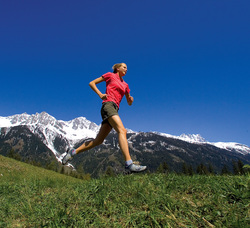 6. Don't let the engine run out of fuel
Learn to eat and drink on the go. If you’re going out for longer than an hour hike/run then make sure you carry food and fluids. You’ll need to start replenishing lost sugars, salts and fluid from as early as 30 minutes in – and keep topping up at least every 30 minutes throughout your run. If you’re training for an event use the foods and drinks you’ll carry on the day. If you’re not sure, experiment with different sports nutrition and real food. 7. Core Strength.
Trail running requires much more agility, control, proprioception and core strength than road running. No two steps you take are ever the same and the control you need to keep your balance and drive you forward comes from your core. Add a core class, pilates or yoga to your weekly plan. 8. Don’t over do it!
Build up your distance/time slowly. Your cardio vascular fitness increases quickly but your muscles and joints don't always adapt as fast – so you may feel fitter, but your body can be vulnerable to injury. The rule of thumb is increase training by 10% per week. If you’re training for an event, work backwards from the event to create a training plan that will help you avoid injuries. 9. Pace Yourself.
Slow it down, and learn to find a pace you can sustain. Of course, sometimes it’s good to do a short sharp hill session and get your heart pumping, but long distance running is about finding a pace you can keep going at. If you can exchange a bit of banter, then you’re probably about right. If you can’t talk, SLOW DOWN. You’ll enjoy it more, and you’ll surprise yourself how much further/longer you can go. 10. Ask for Help!
Mountain running is a lot more technical than most people give it credit for. Chamonix is full of personal trainers, International Mountain Leaders, Physios, Sports Massage Therapists, Pilates / Yoga teachers, and sports shop assistants – who are all passionate runners. You don’t necessarily need to pay for advice – it's a sociable, friendly sport, and most trail runners are more than happy to give you a few tips and help spread the lycra love! HAVE FUN and HAPPY RUNNING. Steph x ps. If you'd like to learn more about Trail Running, we have 3 trail running holidays in Chamonix this summer, run in partnership with Tracks and Trails. Click here for more info.
Check out what's happening at Chamonix Gym this May. Voici ce qu'il se passe a Chamonix Gym ce Mai.
 | Chamonix Gym News - MAY 2012 | | File Size: | 331 kb | | File Type: | pdf |
Download File
Our friends at reactfirst.co.uk are running a Fitness first aid course at Chamonix Gym on 24th May. Scroll down for more info, and drop us a line if you're interested - invaluable and affordable - how can you say no?! Email info@chamonixgym.com
Fitness First Aid
The Fitness First Aid course is a great introduction to first aid in a sport and fitness environment. It is specifically designed to meet the needs of Sports Therapists, Group Exercise Instructors and Coaches who simply need a one day course to keep their UK instructor qualification valid. The course is part of the Scottish Qualifications framework and allows you to register CPD points with REPs and other organisations and the relevant parts of the course are taught according to the UK and European Resuscitation Council guidelines. The certificate entitles the candidate to be a First Aider for 3 years from date of issue. There are no pre-requisites to attend this course. 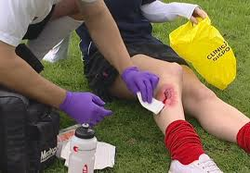 Trainer
The course will be delivered by Charlie Holmes who is our Head of Training and most experienced Sports First Aid trainer. He is only in Chamonix for a few days, so we've fit this course in to take advantage of his being in town. We need a minimum of 6 people for the course to run, so if you are interested it would be great to hear from you. If you like the sound of the course but can't make this date, let me know and i'll keep you informed of any future dates too. Cost
£80 per head (UK pounds)
DateThursday 24th May from 09:00 -17:00
Venue
Chamonix Gym | Be Pure Fit 635 Avenue des Alpages Les Houches 74310 France Booking
Please email Jenny at info@reactfirst.co.ukif you would like a place on this course or you can reserve a place through our website at www.reactfirst.co.uk/calendar.asp Course Content
Safe best practice and awareness of current regulations Sports specific practical scenario training A systematic approach to incident management. Primary Survey Vital Signs Airway management - safe airway positions and dealing with gum shields Return to play decisions - assessment using SALTAPS Recognition of concussion - use of Maddock's questions Soft Tissue Injuries, strains and sprains - when to and when not to use ice CPR ressuscitation procedures - single and multi person scenarios Choking What to put in your first aid kit How to make an action plan
|

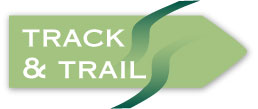

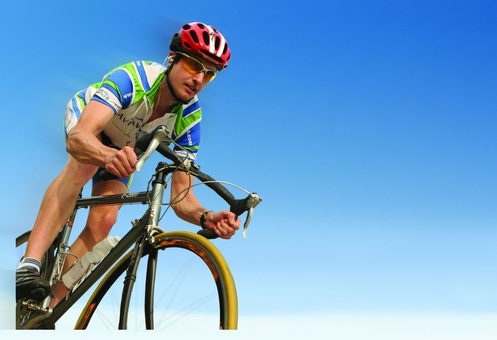









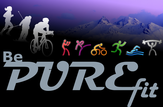
 RSS Feed
RSS Feed